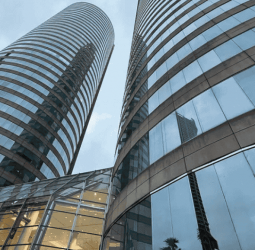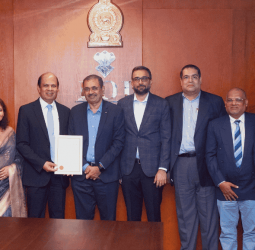In a recent discussion held with a US delegation, President Anura Kumara Dissanayake affirmed the Government’s commitment to securing investments and ensuring that investors entered the country.
With an investment act currently under development, alongside the creation of new legislation aimed at ensuring both transparency and stability within the entire investment process, he highlighted that a secure environment for investments had now been established.
Stakeholders view these efforts as essential for creating a more secure and predictable environment for both new and existing ventures, while urging the need to streamline the investment process promptly.
New dynamics for investment attraction
As of June, the Board of Investment (BOI) recorded 79 investment proposals, 40 greenfield projects, and 39 expansions, with an estimated total value of $ 4,669 million. Foreign investment constitutes the bulk of this value at $ 3,899 million, while local investment is $ 770 million. The number of proposals received shows an 18% rise compared to the same period in 2024.
Commenting on the current investment ecosystem in the country, Frontier Research Senior Research Analyst Navinda Meepe said that the overall shift in Sri Lanka’s economy, signified by improving fiscal indicators, a stronger current account, and a pickup in credit, was creating a new dynamic for the country.
He opined that this trend could give investors greater confidence to believe that Sri Lanka’s economy was entering a new paradigm, moving away from the typical cycles of ups and downs seen in the past. He also added that the recent credit rating upgrade could further provide a solid platform to strengthen investor confidence.
According to Meepe, if this positive narrative remains consistent over an extended period, overall confidence in Sri Lanka can continue to build and might even translate to additional credit rating upgrades in the future.
“With all of this, when much of the world is facing various economic pressures and uncertainties, Sri Lanka’s fundamental improvements could help the country stand out. In such a context, any measures aimed at improving investor protection could further strengthen confidence and even attract the marginal investors to consider opportunities in Sri Lanka,” he added.
Sri Lanka’s Foreign Direct Investment (FDI) in the first quarter of 2025 dramatically increased by 90%, reaching $ 203 million compared to $ 107 million in the same period of 2024. Nearly three-quarters of this investment went to port development (41%) and manufacturing (34%), with tourism and leisure accounting for an additional 20%.
The remainder was spread across other areas like telecommunications, ICT, property development, and agriculture. Moreover, Sri Lanka’s realised local investment during the same period reached $ 87 million, which is a 32% increase from $ 66 million in the first quarter of the previous year.
Fixing delays a priority
Addressing the need for investment protection in Sri Lanka, Ceylon National Chamber of Industries (CNCI) Chairman Pradeep Kahawalage stated that one key issue in the investment process was the long periods required for it. He said that there was considerable protection for investments with institutions such as the BOI.
“However, the time duration taken to invest in Sri Lanka, whether it be FDIs or otherwise, is concerning. In many other countries, FDIs can come to the country within a maximum of two weeks’ time. However, in Sri Lanka, this process takes months. These issues need to be promptly addressed and these processes need to be expedited, especially by the BOI. This is the main issue I perceive in the process,” he said.
Kahawalage further noted that protection was available for companies undertaking FDIs in Sri Lanka, especially in terms of the regulatory framework, allowing any investor to conduct business activities.
The CNCI Chairman also noted that the transparency and stability of the process were currently improving in comparison to previous administrations. He viewed initiatives taken by the Government, especially on curbing corruption, mismanagement, and reducing leakages and wastage, in a positive light, appreciating these efforts while acknowledging this improvement and transparency. While there are certain gaps, he noted that Government-backed efforts in addressing these issues had yielded positive results.
According to recent statements made by the President, the investment protection act aims to reinforce commitment regarding guaranteeing investor protection, expanding investment opportunities, and facilitating investor operations, with the Government’s $ 5 billion FDI target for 2025.
However, despite a 5% GDP growth in 2024, a US Department of State report highlighted that Sri Lanka’s investment climate remained challenging, especially with FDI remaining rather constrained, with most transactions in the $ 3–5 million range.
Accordingly, policy stability, regulatory reform, and improved transparency have been highlighted as essential to attract large-scale investments. In Sri Lanka, the sectors that attracted the most foreign investment in 2024 were tourism, ICT, renewable energy, manufacturing, and real estate.
Understanding ecosystem challenges
Speaking to The Sunday Morning Business, public policy specialist and independent economist Dr. Roshan Perera highlighted that recent concerns by many and the US State Department report were revealing in terms of the challenges investors faced when investing in Sri Lanka and on the ease of doing business in the country.
Dr. Perera noted the need to practically address these challenges outlined by stakeholders, to move beyond simply putting acts in place, and to address the entire business climate for both foreign and local investors, especially in terms of regulatory and approval challenges.
She pointed to the need to assess the entire ecosystem and regulatory frameworks comprehensively to determine the necessary changes required, since different industries and businesses faced different challenges. She noted that this was a strategic approach taken by several countries that had been highly successful in attracting investors, such as Vietnam.
“Vietnam examined all the regulations under different ministries, going through each sector that affected investment, an approach that allowed them to attract several billion dollars worth of investments in a very short period. Sri Lanka, as a country that is in need of improving economic growth, must also examine gaps in a comprehensive manner.
“Growth is not possible without attracting FDIs. This is because Sri Lanka lacks capital, but even if there was adequate capital, the technology and know-how come through FDIs, although this is largely ignored by many,” she said.
She emphasised the necessity of technical know-how and labour skills in Sri Lanka, adding that 3–4% growth would not take the country very far in the medium to long term.
The International Monetary Fund (IMF) Technical Assistance Report – Governance Diagnostic Assessment notes the systematic and severe governance weaknesses as having a notable macroeconomic impact across several sectors, including public investment management.
The report highlights that weaknesses in the Public Financial Management (PFM) legal framework and processes significantly increase corruption risks, particularly impacting investment. These issues include limited budget transparency, poor commitment management, and inadequate investment planning.
Thus, the practice of accepting unsolicited capital investment proposals through non-transparent and non-competitive methods has created a growing number of ‘problem’ projects and raised serious corruption concerns, directly undermining sound investment.
On the transparency and stability of the investment process, Dr. Perera stated the need for proper procurement, as well as publishing data and tenders, to ensure clarity on those involved and the processes. She noted that transparency in Government procurement was essential, although e-procurement processes and effective procurement data publication required traction. She also pointed to the need to publish tax incentives and criteria regarding these to enable similar opportunities for all suitable companies.
“Such transparency should be improved, ensuring openness of data. This will help companies and investors understand incentives and criteria required to meet them. Thus, this data should be made public,” she added.
Focusing on investments for exports
Meanwhile, speaking to The Sunday Morning Business, Sri Lanka Logistics and Freight Forwarders’ Association (SLFFA) Chairman Channa Gunawardena noted the significance of an initiative for investment protection, which, if pursued, would enable more protection for both foreign and local investors. He noted that if the mechanism was implemented effectively, it would help attract notable investor interest.
“This could also mean amendments to certain laws as well, in order to facilitate investors. This is important since some laws are not adequately investor-friendly, although we are uncertain as to what extent laws will be amended as the mechanism is yet to be seen,” he stated.
Gunawardena noted that from the industry perspective, the most significant area of focus was bringing in investments into the export sector.
For instance, if a person wishes to start a factory, the requirements of that investor will include certain amendments, such as a more balanced labour law and an updated Customs ordinance, as the current one is old and obstructs progress of exports to a certain extent. He noted that these were two key areas that needed to be addressed when ensuring greater investment attraction in the export sector.
Furthermore, National Chamber of Exporters (NCE) Secretary General and Chief Executive Officer (CEO) Shiham Marikar noted that there was a significant requirement for FDIs, especially for exports, in order to install an export hub, plants, and machinery. For this, he pointed to the need to assess India’s current situation, with Indian businesses looking to shift locations due to US President Donald Trump’s additional tariffs on India.
Hence, he highlighted the need for Sri Lanka to focus more on the Indian ecosystem and attract these investments. He emphasised that if efforts were to be made regarding investment protection, it would greatly strengthen the current position of the country.
Further, the US Department of State report highlights that while the BOI is the principal investment promotion agency, it struggles to function as a ‘one-stop shop’ due to fragmented authority across multiple Government departments, creating lengthy approval processes that frustrate potential investors. Investors report challenges in having a consistent and open dialogue with the BOI.
Marikar also explained the need to streamline processes, while acknowledging some progress had been made recently.
“When looking at the past, it can be understood that Sri Lanka’s investment attraction has been rather lacking. However, with the BOI being streamlined and under new leadership, certain positive changes are taking place, with investments coming in.
“Nevertheless, more improvements are needed to streamline the whole process, especially a one-stop shop to assess available opportunities and a set of step-by-step guidelines regarding documentation, paperwork, regulations, tax benefits, and legal aspects,” he added.
Meanwhile, in recent announcements made by the BOI, the officials emphasised Sri Lanka’s strategic advantages for investors: a highly educated and trainable English-speaking workforce; a strategic location along major East–West shipping routes; and competitive opportunities in high-growth sectors such as logistics, renewable energy, technology, pharmaceuticals, minerals, apparel, tourism, and real estate development.
Officials also outlined several upcoming initiatives, including specialised economic zones for technology, textiles, and pharmaceuticals; new digital economy initiatives; and expanded opportunities in port logistics and industrial infrastructure, supported by upcoming regulatory reforms to further encourage strategic investments.
Source: The morning



 Natasha
Natasha






